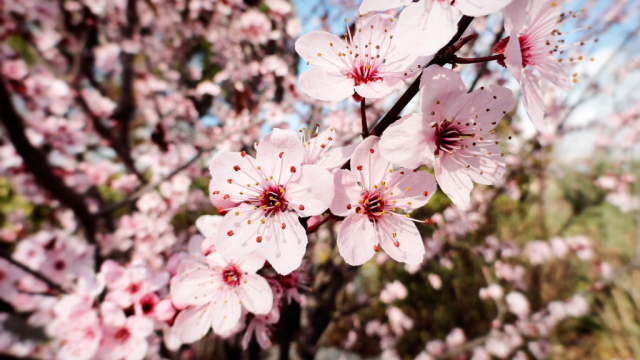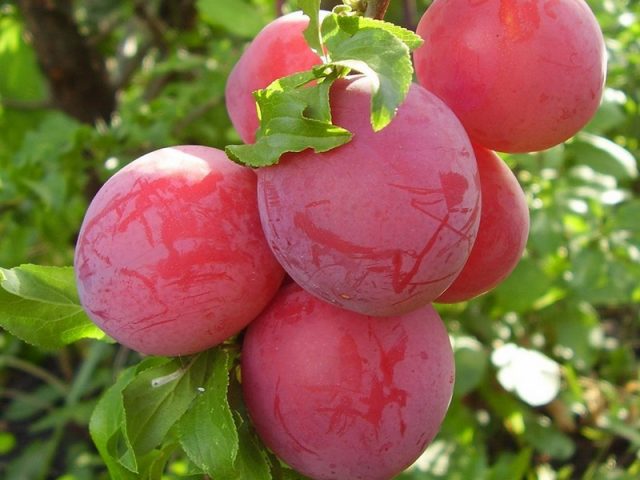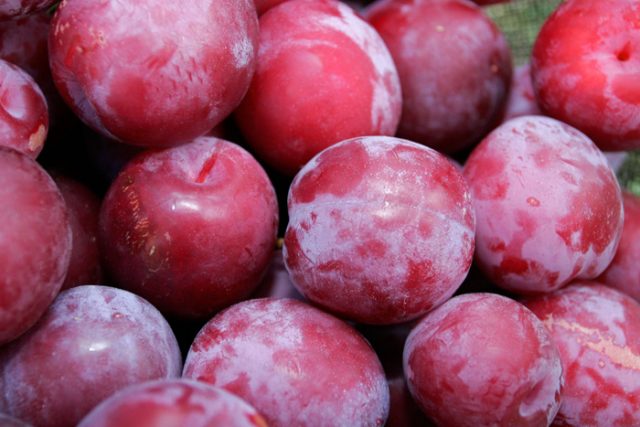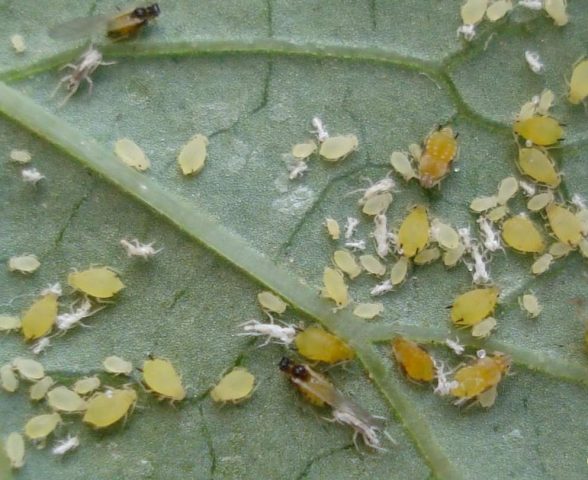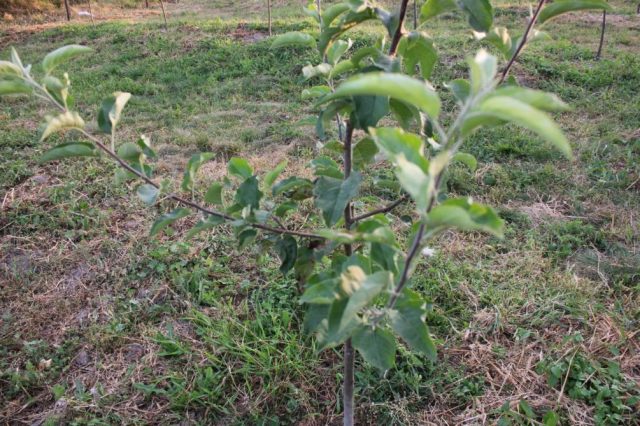Content
Skorospelka red plum is one of the most demanded varieties in the average Russian zone. Trees, as a rule, reach medium height, are endowed with an oval-rounded crown of moderate density. The variety is considered winter-hardy, moderately drought-resistant. Despite this factor, the best crop with high quality indicators can be harvested only on moderately heavy, high-quality fertilized and irrigated lands.
Breeding history of the variety
The Skorospelka red variety is tentatively the result of cross-pollination of Hungarian ordinary. Delivered from the former nursery of Regel and Kesselring. In the VIR collection since 1926. Included in the State Register for the Northwestern District since 1947.
Description plum Skorospelka red
An adult red plum reaches 3.5 meters in height, has a crown-shaped crown, 3–3.5 m wide. The stem is light gray or pale brown, smooth or rough. The main, most powerful branches deviate from the trunk at an angle of 30-50 degrees, rather erect.
The bark of the early ripening plum is brown-gray in color, with a smooth or rough surface, does not crack lengthwise. Shoots slightly curved, green-brown, not omitted.
According to the description of the Skorospelka plum variety, the red buds of the culture are medium, slightly pressed or slightly extending from the shoot, brown, 1-3 pieces per node. Plum leaves Red, medium thick, elongated obovate, slightly depressed, medium size, green, with a smooth surface (bare above and slightly pubescent below). The edges of the leaves are single-serrated, the apex is pointed, the base is wedge-shaped. The petiole is green, medium, with anthocyanin and a pair of glands.
The flowers of the Skorospelka plum are red, medium open, have broadly oval petals (corolla diameter 24–26 mm, number of stamens 23–25, oval ovary, not omitted). Flowering and fruiting tend to focus on adult shoots.
The early ripening plum bears round or ovoid fruits, the weight of which varies from 15 to 20 grams. The main color is pink-scarlet, the integumentary color is crimson-violet, it accounts for most of the fruit. No pubescence is observed, there is a moderate waxy bloom of a bluish tint. Ripe plums are uneven. The pulp is bright yellow, moderately juicy, with the presence of fibers, darkens from the ingress of air to a medium degree, has an average density. The skin is thin and can be easily removed. The stem is medium in size (makes up approximately 5–6% of the plum mass, it can be easily separated from the pulp).
The fruits of the Skorospelka red plum are quite tasty, sweet and sour, emit a pleasant delicate aroma, ripen unevenly, ripe, as a rule, crumble.
Description of plum variety Skorospelka early
Early plum Skorospelka begins to bloom at the end of May.Ripe plums can be harvested in the second half of August - early autumn (depending on the growing area). Shoot plants enter the fruiting period about the sixth year after planting, grafted plants - 3-4 years. The life span of a red plum can be up to 25 years.
Variety characteristics
Plum Skorospelka red is a small tree with a spreading spherical crown.
Drought resistance, frost resistance
Home plum Skorospelka red is a winter-hardy tree that can withstand even the most severe frosts (from 35 to 38 degrees). Flower buds are slightly less resistant to cold, mainly in the second half of winter.
In case of insufficient moisture, red plums may crumble. Despite the fact that the Skorospelka krasnaya variety is rather drought-resistant, abundant yields of the best quality are obtained on medium-heavy, moderately fertilized and irrigated soils. However, the plant is very unpretentious, capable of growing and bearing fruit even on highly waterlogged soil.
Plum pollinators Skorospelka red
The early ripening plum variety is partly self-fertile. Excellent pollinators:
- Collective farm renklod;
- Hungarian Moscow and Pulkovo;
- Reform;
- Ochakovskaya black;
- Nikolskaya and Winter White.
Productivity and fruiting
The entry of the plum into the fruiting period suggests that the plant's productivity is increasing at a rapid pace. At the age of 5–10 years, Skorospelka red plum yields 2–10 kg of ripe pilaf, at maturity (10–25 years) - 10–30 kg per tree, individual plants are capable of producing 40–50 kg of plums. The plant can bear fruit every year.
Scope of berries
The fruits of the red plum can be eaten fresh and can also be processed, although when preserved, the berries are not of the highest quality.
The berries are kept cool for more than 25 days.
Disease and pest resistance
The adult Red Ripe is extremely rarely attacked by pests and diseases. On rare occasions, Skorospelka can be affected by aphids.
Advantages and disadvantages of the variety
Advantages of the Skorospelka plum variety:
- excellent winter hardiness;
- unpretentiousness;
- excellent adaptability to environmental conditions;
- decorative crown of an oval-spherical appearance;
- early maturity;
- regular productivity;
- pulp easily separated from the stone;
- long life of plants;
- immunity to diseases and pests;
- property to multiply due to root growth.
Disadvantages:
- different ripening times of plums;
- significant crumbling;
- not too high quality indicators of berries and products of their processing;
- the need for pollinating neighbors.
Landing features
A well-chosen place for a red plum is a guarantee of a high-quality harvest and excellent growth. Ideally, this should be an elevation located on the sunny side, with loamy or chernozem soil.
Recommended timing
Planting of early-ripening red seedlings should be done exclusively in spring for a bare root system, and in the period from spring to mid-autumn for container plants.
Choosing the right place
The opposite situation can lead to a decrease in the sugar content of the plum and a reduction in the yield.
Due to the fact that the culture is not the most frost-resistant, it should be planted next to summer cottages (among houses and sheds, between a bathhouse and a fence). The best choice for planting Skorospelka red will be a sunny place, which will be closed from the north by a brick wall. When heated, it will act as a protection from cold winds and will be able to heat the red plum.
Early ripening red categorically does not tolerate stagnation of water in the soil, therefore, if there is a likelihood of flooding the roots of a tree in the garden, if possible, it is worth building a drainage or planting a plant on a mound.Otherwise, the plum will be poorly developed, prone to disease and may even die. Groundwater should be at a depth of 1.5–2 meters. Red plum grows best on light sandstones and loams.
What crops can and cannot be planted nearby
The Skorospelka plum, like other varieties of plums that grow in the Moscow region, is self-fertile (pollen from another tree is required to set fruits). Therefore, you need to plant nearby plums of other varieties.
For a good fruit set near the red plum, experts advise planting cherry plum.
Selection and preparation of planting material
It is worth choosing a one- or two-year-old tree with a developed root system and at least three shoots.
When buying a Red Skorospelka sapling in spring, you can immediately start pruning branches. In no case should you touch and cut off the root system. The denser it is in a young tree, the sooner it will take root and be able to develop safely. The roots need to be spread.
Landing algorithm
- Plum sapling Red is not recommended to deepen significantly when planting in the soil.
- The root collar (the place where the root merges smoothly into the trunk) should rise at least 5 cm above the ground level.
- When planting a young seedling in open ground, humus or humus, as well as potassium sulfate (80 g), superphosphate (200 g), are required for planting. There is no need to add nitrogen.
- When planting a branch of a young plum, you need to thin out by one third, as this will contribute to the early formation of a dense crown.
Plum follow-up care
Next, you need to cut off part of the crop at the stage of embryos, which will reach several centimeters in diameter. This will contribute to the rationing of the crop. Thanks to this, the plums that remain on the tree will be able to reach their largest size when ripe and will be much sweeter. Among other things, this method will at least partially help to combat the frequency of fruiting.
Plum Skorospelka is very fond of water, so watering is required 4–5 times a month (one bucket per adult tree twice a day).
The plum is endowed with a tendency to form basal growth (it must be cut from the ground itself so that a significant part of the micronutrients does not go to it).
Diseases and pests, methods of control and prevention
Red plum, as a rule, is not attacked by pests, but it can become a delicacy for mice and hares. In order to protect the tree, you need to cover the bole with a special material or nylon tights (the fabric must necessarily allow air and water to pass through, so the film and roofing material will not work). If possible, it is worthwhile to completely wrap the plum. For mice, it is best to use a specially designed rodent net.
Conclusion
Plum Skorospelka red - winter-hardy medium-sized tree, endowed with a rounded or flat-round shape. The variety is partially self-fertile, fruiting best when Vengerka Moskovskaya and Renklod collective farm grow nearby. The yield of an adult plant can reach 40 kg of ripe and juicy plums, which are stored for a month. Plum care, carried out in a competent manner, can contribute to obtaining a good harvest.

